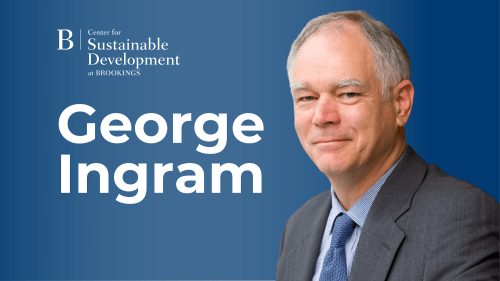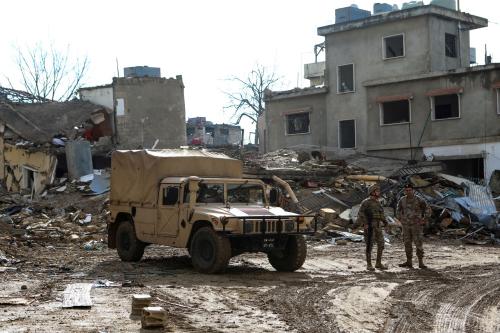With India and Pakistan poised on the dangerous precipice of a fourth war, global attention is shifting from Kabul to Kashmir. The first targets of the United State-led war on terrorism in Southern Asia were al-Qaeda and its host, the Taliban regime in Kabul. Operation Enduring Freedom sought to achieve three objectives: the overthrow of the Taliban regime; the capture or elimination of the Taliban and al-Qaeda leadership; and the dismantling of terrorist bases and networks in the region.
Kashmir was not in the picture. Although there was an appreciation of India’s problem of cross-border terrorism in Kashmir, it was perceived to be an “Indian problem”, at best a secondary issue. The US ambassador to India, Robert Blackwill, did assure that terrorism against India would be addressed in the second phase of war against terrorism.
However, when India, in the aftermath of the suicide attack on its parliament on December 13, raised the military ante and threatened Pakistan with war unless it stopped cross-border terrorism, the George W Bush administration was forced to take notice. Washington banned the Lashkar-e-Toiba (Soldiers of God) and the Jaish-e-Mohammed (Army of Mohammed), the two groups blamed for the parliament attack, and also put enormous pressure on the regime of President General Pervez Musharraf to crack down on terrorist groups operating from Pakistan.
The primary objective was to avert a fourth war between India and Pakistan which, many in the Bush team believed, held the danger of nuclear cataclysm. Equally important, the US was keen to de-escalate the crisis on the Kashmir front because it posed an immediate threat to its critical interests in Afghanistan. First, Washington did not want Pakistan to divert its forces deployed on its Afghan border for mopping up operations against the fleeing Taliban or al-Qaeda leaders into Pakistan. Second, a war between India and Pakistan could directly threaten the lives of thousands of US soldiers on the Pakistani borders. Third, it would have put the international coalition against terrorism in jeopardy, in which both India and Pakistan are the US’s partners.
However, once the war clouds dissipated, the US returned its full attention to its primary goal of pursuing al-Qaeda’s remnants. The task of pursuing the Pakistan-based jihadi groups had, once again, become a secondary consideration entrusted primarily to the routine counter-terrorism groups in Islamabad and New Delhi. The bottom line had not changed. Kashmir was still viewed from the lens of Operation Enduring Freedom in Afghanistan, and hence appeared to be on the periphery.
What the Bush team appears not to have understood is that Kashmir and Kabul are closely knitted together, partly through the tangled web of terrorist networks in the region and partly due to Pakistan’s—its frontline ally—vital national interests at stake in Kashmir, which it seeks to protect precisely through the instrument of jihadi groups.
Washington’s al-Qaeda-first policy overlooks the ground reality that al-Qaeda thrives on a vast, deeply entrenched and integrated jihadi infrastructure that straddles the Afghanistan and Pakistan borders. This network includes more than 50 Pakistan-based radical groups who share deep bonds of an Islamic ideology, common political targets—the United States, India and Israel—training facilities and resources. These groups, unlike states, operate from a radically different frame of reference and are not predisposed to making rational calculations of the kind the West understands. They are unlikely to emulate the Musharraf regime and abandon al-Qaeda and the Taliban.
It was in the aftermath of Operation Anaconda in March that the realization first dawned on the US forces that al-Qaeda, in that instance led by Jalaluddin Haqqani, a mujahideen commander who had joined the Taliban, was able to mount military attacks and then melt away in the Federally Administered Tribal Areas (FATA) of Pakistan. With a growing perception that there were significant pockets of al-Qaeda and Taliban elements on the Pakistani side of the border, especially in Waziristan, Washington started putting pressure for joint military operations. The Musharraf regime was very reluctant to undertake any military operations on the grounds that the population of those areas was hostile to Americans and very well armed. Some openly acknowledged that Pakistan’s administrative writ does not run there. Pakistan subsequently yielded and Operation Mountain Lion was jointly carried out with over 1,000 US and British troops on the Afghan side of the border, and nearly 8,000 Pakistani troops were deployed in the Waziristan area. But there is little information in the public domain to indicate that this operation was successful.
More important, this line of thinking rests on a key albeit flawed assumption that Musharraf is committed, sincere and willing to crack down on the terrorists on his home front, but only needs more time to do so. Musharraf’s regime, it is argued, has alienated many jihadi groups by severing its ties with al-Qaeda and the Taliban; helping the US forces destroy their bases in Afghanistan; and expelling, arresting and handing over the Arab jihadis within Pakistan to US, and thus fears a backlash from them. This is true, but not the whole truth.
The other half of the story lies in understanding why Musharraf has held back from launching a concerted drive against the domestic jihadi network, which has been the chosen instrument of the Pakistan army’s in securing its critical foreign-policy goals of liberating Kashmir. This is where the crunch lies. The centerpiece of Pakistan’s Kashmir strategy has been to engage India militarily through a low-cost and increasingly privatized proxy war by arming and training militant groups in Kashmir. Before September 11, Musharraf insisted on distinguishing jihad from terrorism, and justified jihad as a legitimate instrument of the “freedom struggle” of the Kashmiris. Even after joining the international coalition against terrorism, Musharraf’s public justification of helping the US military campaign against a neighboring Muslim country, Afghanistan, rested mainly on protecting its stakes in Kashmir.
During the first Afghan war in 1980s, the US had turned a blind eye to Pakistan’s nuclear program. If Pakistan’s unstated assumption based on this experience was that the reward at the end of the Afghanistan campaign would be a license to light the fires again in Kashmir, it was quickly buried after the December attack on the Indian parliament. The fundamental logic of the war on terrorism dismisses the fine distinction being drawn between jihad and terrorism. Musharraf grudgingly acknowledged it in his January 12 speech to the nation and conceded that Pakistan would not allow jihad in the name of Kashmir.
However, there is mounting evidence in the past eight months that it was a “tactical retreat” and not the harbinger of a paradigm shift. Consider the facts. Approximately 1,800 out of 2,000 persons arrested as part of the crackdown in October have been released. Hafiz Mohammed Sayeed, the leader of the Lashkar-e-Toiba, was released on the orders of the High Court, though he was again arrested last week. Maulana Masood Azhar, the leader of the Jaish-e-Mohammed (a group Bush listed only next to al-Qaeda in his State of the Union address and is suspected of involvement in the murder of US journalist Daniel Pearl) is under house arrest and is receiving a government allowance. According to Fortune magazine, the Pakistan government’s decision to freeze the bank accounts of these groups yielded paltry sums, including US$323.65 from the Taliban consulate in Quetta and $1.50 hauled off from an account of the Jaish-e-Mohammed. They continue to operate under different names and have shifted some of their bases to Azad Kashmir. As the snows melt, the infiltration patterns and terrorist-related deaths in the Kashmir Valley have shown a rising curve.
Washington is learning that since Kashmir, as Musharraf insists, “runs in our blood” and jihadi groups are the Pakistani army’s only leverage against India, it is unlikely to backtrack on Kashmir. The Pakistani leadership’s attempts to create a firewall between Kabul and Kashmir are bound to fail, partly because the jihadi groups do not respect such boundaries, and unless Pakistan changes course it will also inevitably clash with the Bush administration’s immediate goal of dismantling the terror bases and networks in the region.
The Brookings Institution is committed to quality, independence, and impact.
We are supported by a diverse array of funders. In line with our values and policies, each Brookings publication represents the sole views of its author(s).



Commentary
Op-edTerror Trail Leads from Kabul to Kashmir
May 25, 2002